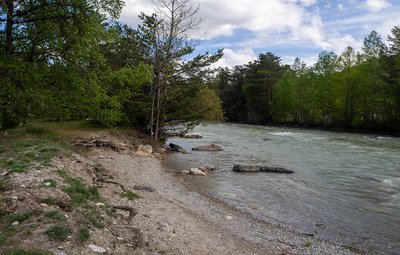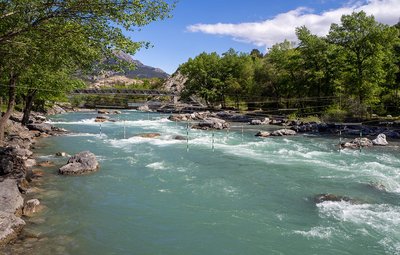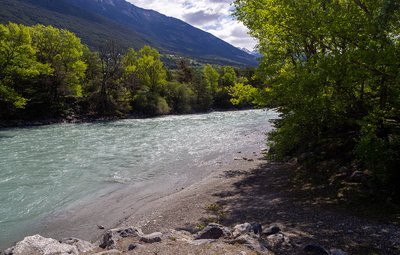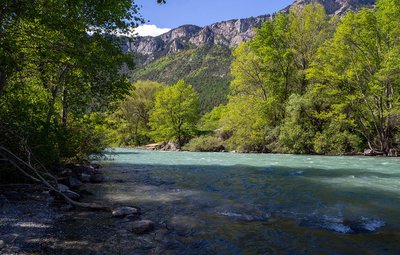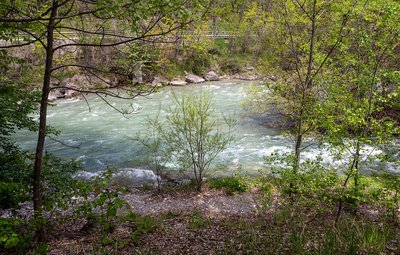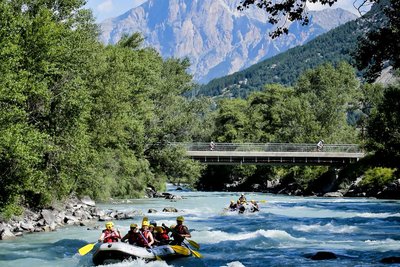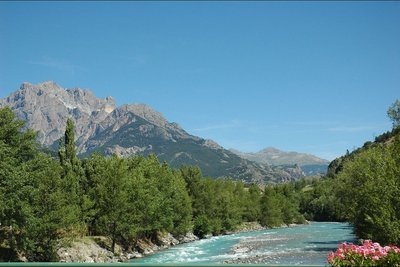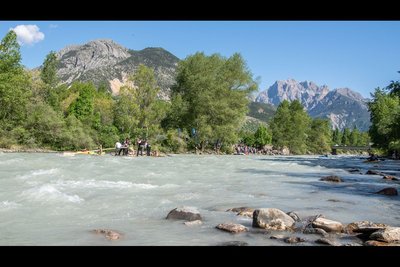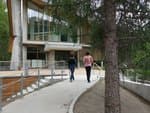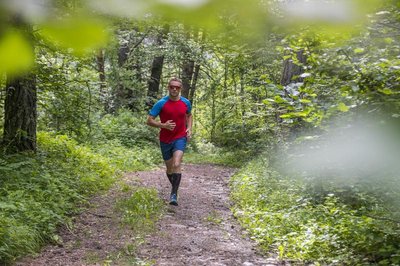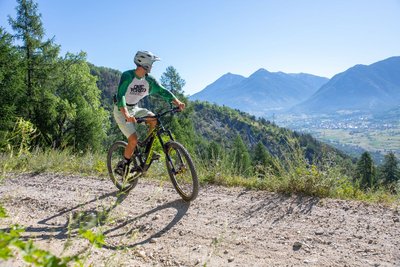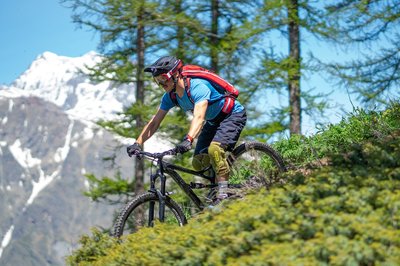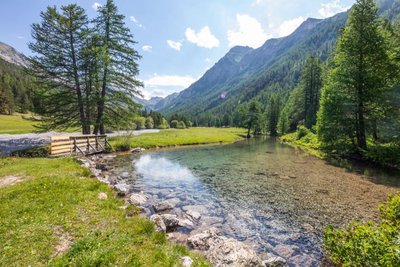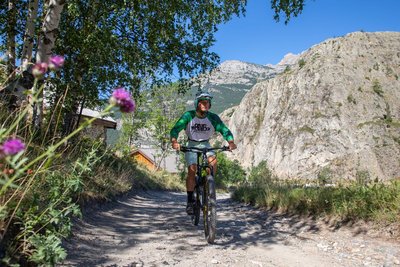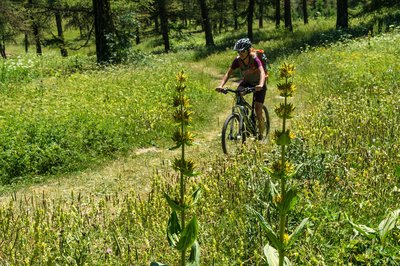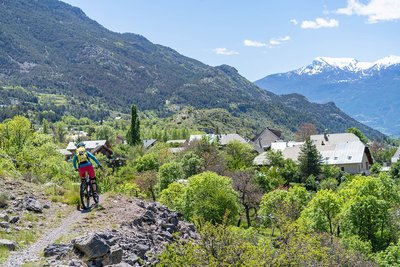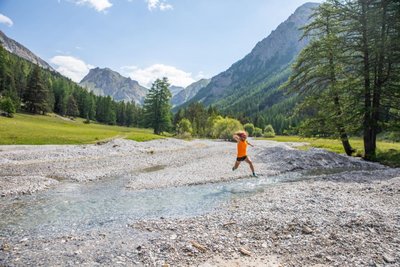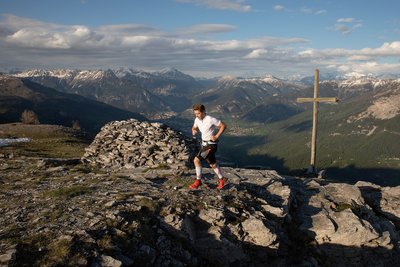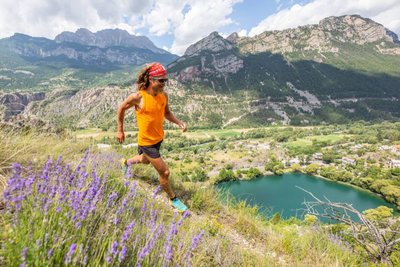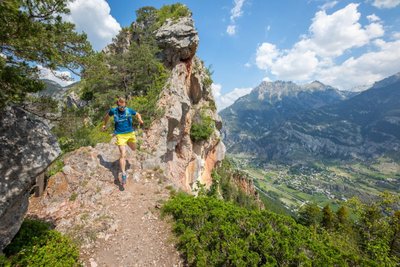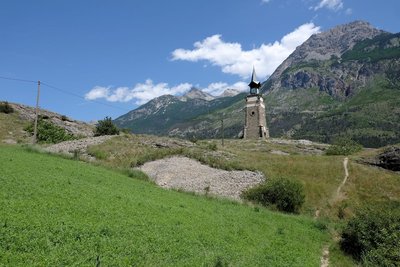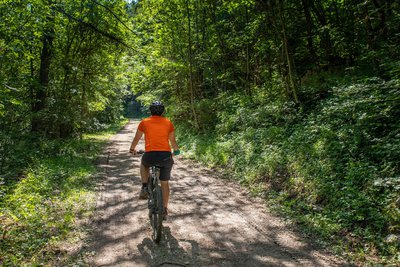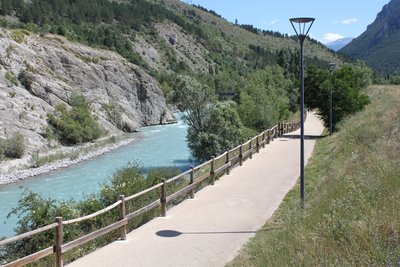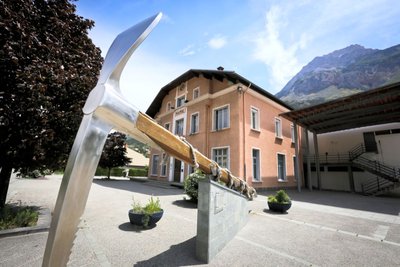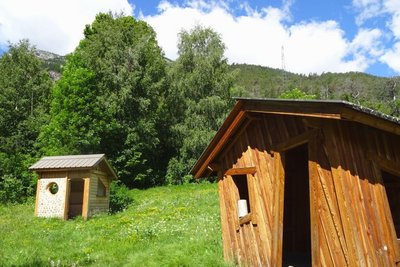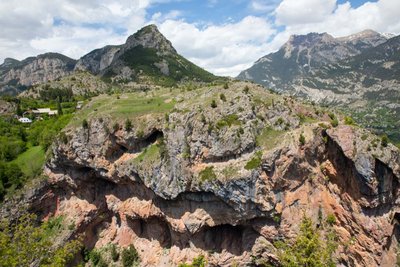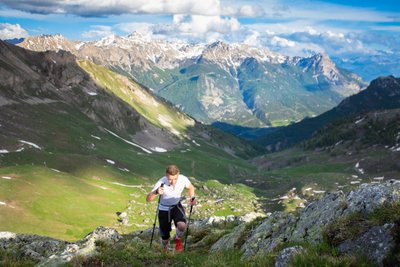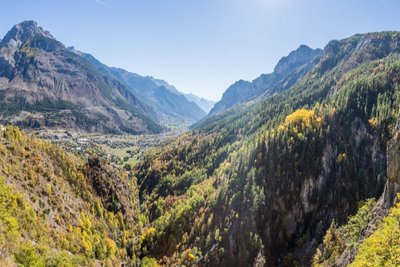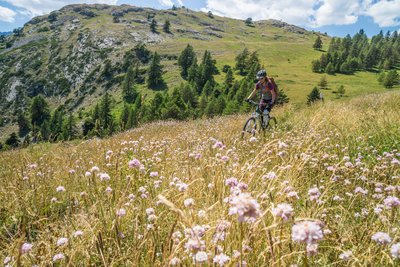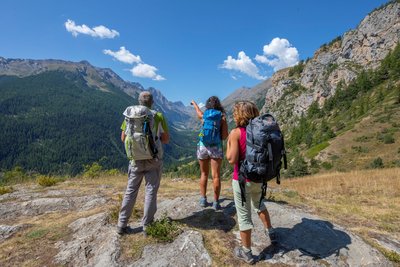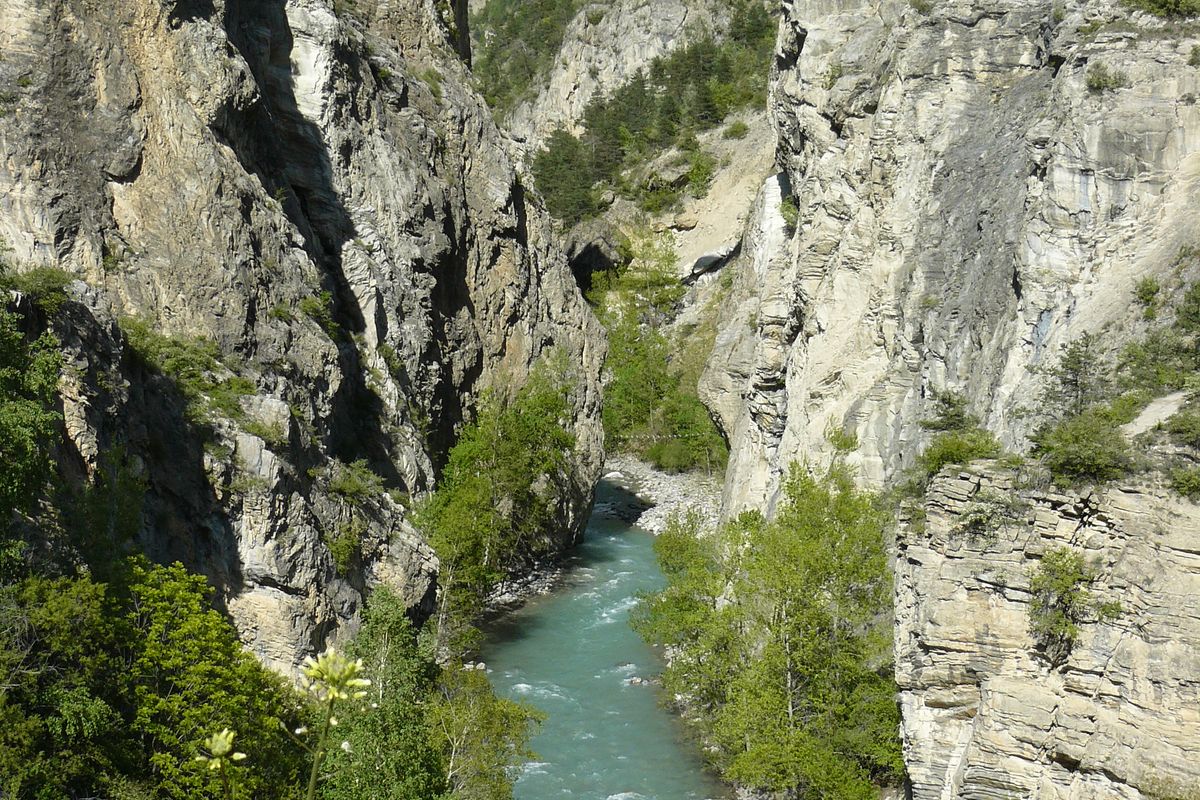
Durance (II / III / IV)
Description
After the Guisane confluence south of Briançon, the Durance dives into gorgeous gorges until reaching l’Argentière, to then become a mazed river that slows down to propose multiple itineraries to less experienced navigators.
A white waters stadium is located at l’Argentière, holding competitions and allowing for a safe practice all season around.
The Durance can be navigated from may to august or september and sometimes october depending on the itineraries and the conditions, which are ever changing in the mountains.
The different descents accessible are the following :
P3 : From Briançon to Prelles
P4 : From Prelles to l’Argentière-la-Bessée
P5 : From l’Argentière to Saint-Crépin
- Towns crossed : Briançon, Champcella, Eygliers, Freissinières, Guillestre, L'Argentière-la-Bessée, La Roche-de-Rame, Les Vigneaux, Puy-Saint-André, Réotier, Saint-Clément-sur-Durance, Saint-Crépin, Saint-Martin-de-Queyrières, and Villar-Saint-Pancrace
The 6 places of practice to discover
Sensitive areas
Short-toed snake eagle
- Impacted practices:
- Aerial,
- Sensitivity periods:
- MarAprMayJunJulAugSep
- Contact:
- Parc National des Écrins
Julien Charron
julien.charron@ecrins-parcnational.fr
Short-toed snake eagle
- Impacted practices:
- Aerial,
- Sensitivity periods:
- MarAprMayJunJulAugSep
- Contact:
- Parc National des Écrins
Julien Charron
julien.charron@ecrins-parcnational.fr
Short-toed snake eagle
- Impacted practices:
- Aerial,
- Sensitivity periods:
- MarAprMayJunJulAugSep
- Contact:
- Parc National des Écrins
Julien Charron
julien.charron@ecrins-parcnational.fr
Recommandations
- Wet suits are strongly recommended (glacier waters can reach under 4°C)
- Helmet and life jacket are mandatory
- Inflatable kayaks are not suitable and strongly advised against
Important information :
- Careful with floods after a storm
- Careful with logjams, especially at the beginning of the season
- Please take your trash with you
Attention : Experience is required in order to navigate these rivers without professional supervision. This information is provided for general guidance. Checking weather reports, water levels, flow rates and conditions before embarking is under your responsability. The tourism office and the national park will not be held responsable in case of an accident.
If you have doubts, please ask a professional. Kayak schools, instructors and renting shops of the valley are here to help you.
Mountain Rescue : dial 112
Weather report
Water levels at l’Argentière : https://www.rdbrmc.com/hydroreel2/station.php?codestation=1125
Information desks
Place de l'Eglise, 05340 Vallouise
Vallouise Park house
, 05290 Vallouise
Information, documentation, models, exhibitions, screenings, product sales and works of the Park. Guided tours for school, reservation required. The new Park House opened in Vallouise since June 1, and offers visitors an interactive permanent exhibition inviting to explore the area and its heritage. A temporary exhibition space will allow a renewed offer. Finally, the device is completed by an audiovisual room to organize screenings and conferences Free admission. All animations of the Park are free unless otherwise stated.
42 points of interest

Quartz - Jean-Pierre Nicollet - Parc national des Écrins  Geology and geography
Geology and geographyThe quartzite and the ripple marks
The rock through which the tunnel has been cut is a quartzite, a metamorphic, siliceous rock which is very hard and formed by grains of quartz welded together. It originates from sand deposited 230 million years ago in the still-shallow waters of the nascent Alpine ocean, and brought here by the erosion of the surrounding topography. In places, undulations can be seen on the tunnel wall: these are ripple marks, "fossilised" creased created by water flowing over the sand.
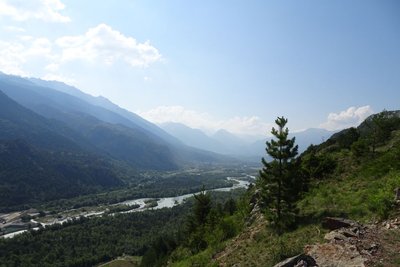
La vallée de la Durance - Office de tourisme Pays des Écrins  Geology and geography
Geology and geographyThe high Durance valley
Protected from Atlantic influences by the Massif du Pelvoux, the high Durance valley has a very dry climate with wide seasonal temperature fluctuations. It has grasslands very similar to the steppes of Central Europe which are rare in France. It is part of the Natura 2000 “Steppique durancien et queyrassien” (Durance and Queras valley steppes) site.

Le sentier du Gouffre - Thibault Blais Photographie  History
HistoryThe Sentier du Gouffre - the ravine path
The Sentier du Gouffre has sometimes been described as a Roman road, but we do not know the exact route the Roman road followed. One thing is certain, it used to be used by the villagers to reach their fields and vineyards, and for any other journeys they had to make.
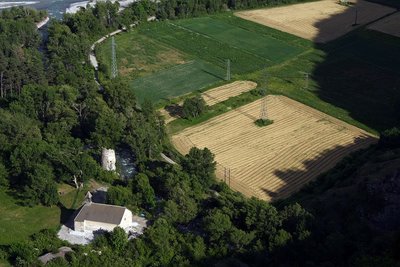
Plaine de Rame et la Chapelle pris de la cime des Rampes - Jean-Philippe Telmon - Parc national des Écrins  History
HistoryThe lost village
In ancient times, the Durance valley was a key communication corridor. Rama was a kind of staging post on the Roman road. In the Middle Ages, Rama was a small town with a noble's château. But the village was devastated by the capriciousness of the Durance and the Biaysse rivers on numerous occasions and the inhabitants gradually deserted the site, moving to neighbouring villages. The attachment of the parish of Rame to that of La Roche in 1446 is indicative of this decline.
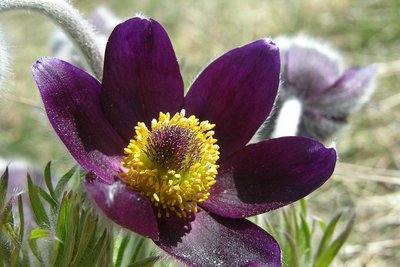
Pulsatille des montagnes - Thierry Maillet - Parc national des Écrins  Flora
FloraThe alpine anemone
The alpine anemone or the alpine pulsatilla blooms here in the spring. It is a plant with a downy covering of white hairs on the large drooping flowers which are dark purple, contrasting with the bright yellow of the numerous stamens, and with very indented leaves. In summer, its fruits with a long pappus, or tuft, form a feathery seed head atop the stem. Although it is frequently found in localised areas, it is nevertheless a rare species dependent on steppe meadows in the Durance valley.
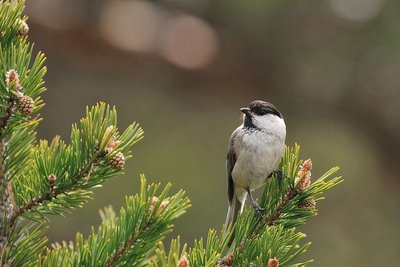
La mésange boréale - Mireille Coulon - Parc national des Écrins  Fauna
FaunaThe willow tit
A small resident passerine with a black cap, brown back and white underside, the willow or alpine tit lives in the mountain forests. It selects a trunk with rotten wood in which to built its nest, because its beak is not designed for pecking into very solid trunks. This tit is very similar to the marsh tit, which tends to live below 1,400 metres. To distinguish between them, you have to listen carefully to the singing and calls of these two birds.
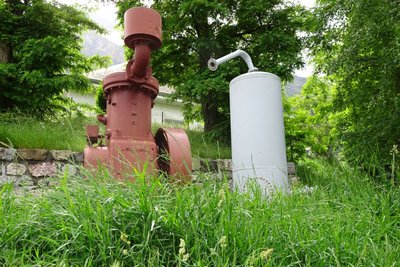
Le compresseur vertical - Office de tourisme Pays des Écrins  History
HistoryThe vertical compressor
In 1910, a 22-year-old engineer, Gilbert Planche arrived in L'Argentière-La Bessée to take advantage of the water here and open a large aluminium factory.
The vertical compressor is the forerunner of the pneumatic drill. The mine operators needed a large quantity of coal and compressed air helped to accelerate coal output. In 1852, Swiss physicist Jean-Daniel Colladon invented the pneumatic drill. The vertical compressor enabled the production of compressed air which powered a drill and simplified coal excavation. The compressor is placed vertically on its support, hence its name.
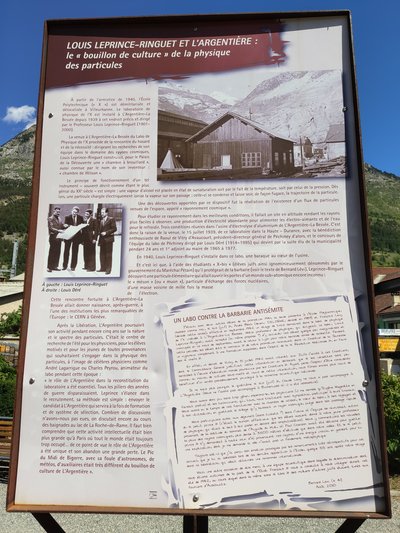
Louis Leprince-Ringuet et L'Argentière - Office de tourisme du Pays des Écrins  History
HistoryLouis Leprince-Ringuet and L'Argentière
Louis Leprince-Ringuet was the director of the Physics Laboratory of X ("X" being a polytechnic school in Villeurbanne) established in L'Argentière. During the summer of 1942, he took in several Jewish students, thus saving them from the Nazis and deportation to Auschwitz. A panel presents the discoveries made by Louis Leprince-Ringuet in this laboratory. A text by Bernard Lévi is also displayed. As a young Jewish student, he took part in research at the laboratory during the summer of 1942. In it he thanks the scientific team for helping him to escape the anti-Semitic barbarism.
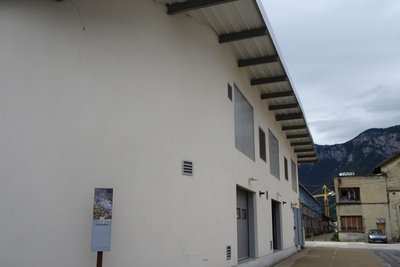
Anciennement l'usine Péchiney - Office de tourisme Pays des Écrins  History
HistoryThe Péchiney factory
This French electro metal company established itself in L'Argentière in 1907. The construction of the aluminium factory started in 1909 and it opened its doors in 1910, powered by the electricity plant built by Gilbert Planche. With it, L'Argentière became an industrial town. The economic crisis of the 1970s and the rise of foreign sources of supply led to the factory's closure in 1985. It was partially demolished in 1988. The workers left the town and in order to prevent the abandonment of L'Argentière, a restructuring project was launched.
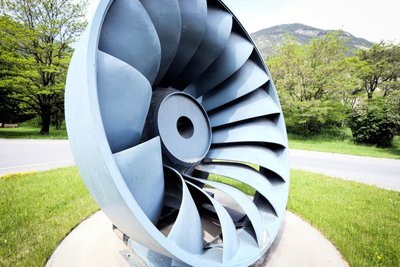
La turbine Francis - Jan Novak Photography  History
HistoryThe Francis turbine
The American James Francis developed the Francis turbine between 1849 and 1855. It is a “àreaction” turbine suitable for medium-sized waterfalls (with a water head of between 15 and 500 metres). The water enters the turbine and then circulates between the turbine blades, which are fixed, while the inner wheel is mobile. The pressure at the wheel intake is greater than the pressure at the outlet.

Un wagonnet - Jan Novak Photography  History
HistoryThe Mines de Fournel rail-cars
Filled with materials excavated from the mine face, the rail-cars were pushed along the rails by the miners.
They were called “mine dogs”. They were originally made from wood and over time iron pieces were added. They were made entirely from metal by the end of the nineteenth century.
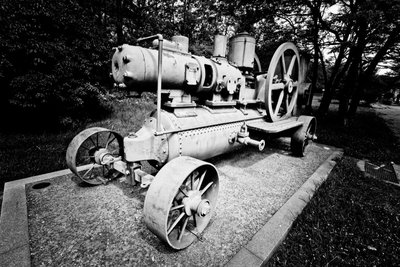
Le compresseur mobile - Jan Novak Photography  History
HistoryThe mobile compressor
In the mines, compressed air is used to remove dust and to create power for the drills. The mobile compressor holds compressed air in a resistant tank. This is brought to a high pressure via a pump (the compressor). The compressed air is then distributed to the mine machinery through a conduit system.
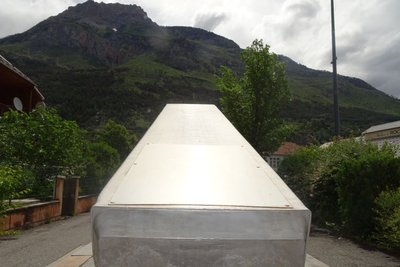
La barre d'aluminium - Office de tourisme Pays des Écrins  History
HistoryThe giant aluminium bar
A young metal, aluminium is the most abundant metallic element on earth. Today, the aluminium industry is the second biggest after steel.
This enormous ingot was made in L'Argentière-La Bessée.
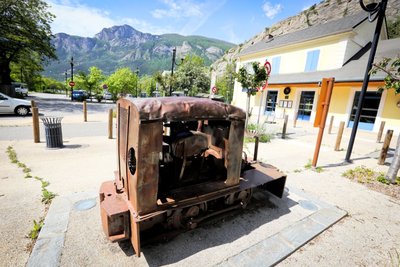
Le locotracteur - Jan Novak Photography  History
HistoryThe light rail tractor
A locomotive? No, its little cousin, the light rail tractor. This replaced manually pushed carts and horse-drawn vehicles. Less powerful than a locomotive, it travelled along narrow-gauge tracks which could be laid on different types of terrain. An information panel also described the role of this vehicle during the Great War.
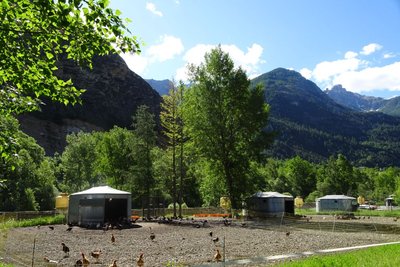
Ferme le long du chemin - Office de tourisme Pays des Écrins  Pastoralism
PastoralismHigh-mountain farming
The mountains are areas naturally used for agriculture. These agricultural practices have been carefully thought-out in order to protect the environment. Agri-environmental measures have been introduced. They are designed to encourage and remunerate volunteer users of mountain spaces in their actions to protect natural environments. These measures prevent over-grazing, the invasion of bushes and shrubs and the proliferation of invasive plants.
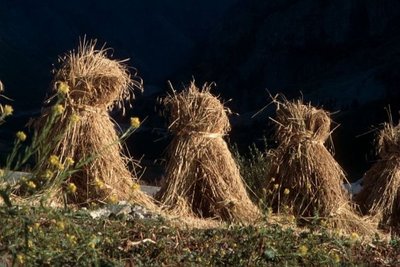
Gerbes - Robert Keck - Parc national des Écrins  Pastoralism
PastoralismStraw insulation
Straw can be used as an insulation material. In fact, it can even be used in its natural state to insulate walls. Straw is available everywhere, it is an abundant resource and its production creates no pollution so it makes a very eco-friendly material. In addition, it offers excellent sound insulation.

La truite fario est très sensible aux polluants : c'est un bon marqueur de la qualité des eaux - Parc national des Écrins  Water
WaterThe adoux, the nurseries of our rivers
Adoux are water courses in which fish can rest, breed and grow within a remarkable ecological reservoir. An ecological reservoir is an area which contains all the natural habitats necessary for the life cycle of a species: from reproduction to feeding and growth. So it could be said that an ecological reservoir assures the survival of the species and fulfils the function of a breeding ground.
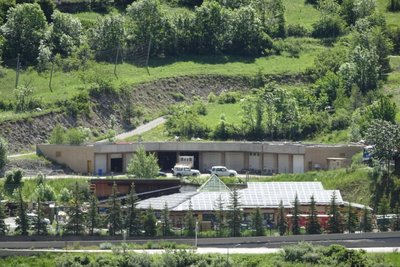
La ressourcerie - Office de tourisme Pays des Écrins  Know-how
Know-howThe Resourcerie
This former school has acquired a new function: that of giving new life to obsolete furniture and objects. The Resourcerie reclamation and repurposing centre makes new objects out of other, unwanted items. No new raw materials are used in their production, thereby helping to prevent the accumulation of waste. Eco-friendly and sustainable, the reclamation and repurposing centre reduces waste and creates employment.

Un mélèze - Hélène Quellier - Parc national des Écrins  Fauna
FaunaThe larch, a tree unlike any other
The symbol of the Southern Alps, this softwood tree loses its leaves in winter, and is swathed with gold and lights up the mountains in autumn. The larch forests are maintained by the grazing of flocks. Without them, other trees like the fir or other pine trees could grow, creating a different kind of forest. A pioneer species, the larch establishes freely in light conditions. Its solid rot-proof wood has always been used in the construction of houses.
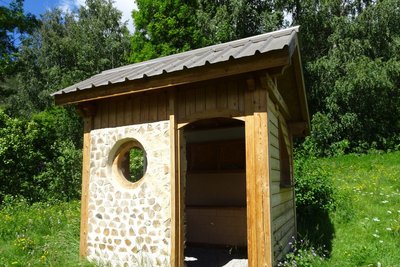
Cabane éco-construite - Office de tourisme Pays des Écrins  Know-how
Know-howEco-construction
On this path, you will pass by some eco-constructed cabins. One of them is made from larch, a wood that is naturally resistant to bad weather and insects and needs no previous treatment. The other is constructed according to the “post-beam” principle, which is reminiscent of half-timbered construction. This is characterised by an exposed supporting framework. The beams support the roof, and these beams are in turn are supported by the posts.

Kiosque à L'Argentière-La Bessées - Jan Novak Photography  History
HistoryThe old workers' housing districts
Workers' housing districts were built to house the many workers who were employed at the Péchiney factory. These districts have now been demolished. The architecture of the houses varied according to the status of the employee. A town hall, a cinema, a bandstand and churches were also constructed.
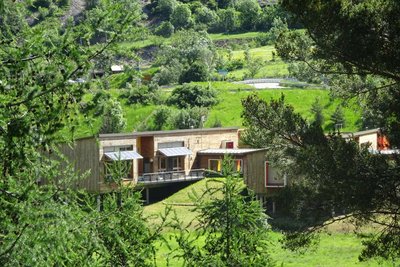
L'école éco-construite de Saint-Martin-de-Queyrières - Office de tourisme Pays des Écrins  Know-how
Know-howThe eco-constructed school
The school in Saint-Martin-de-Queyrières is built out of materials that are safe and sustainable. The building is of bioclimatic design, that is to say, the architecture is adapted to the characteristics of the climate of the local area in which it is sited, in order to obtain the most natural ambient comfort possible. The environment provides power and resources through, for example, the capture of solar energy, the use of air circulation techniques, rainwater harvesting etc.
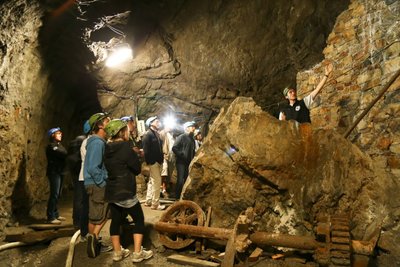
Les mines d'argent - Thibault Blais Photographie  History
HistoryThe mines of L'Argentière
The municipality of L'Argentière owes its name to the silver mines exploited here. They were first worked in the early Medieval period and later abandoned before exploitation resumed again in the nineteenth century. They were finally closed in 1908. Since 1992, the site has been the subject of archaeological excavations, with major work to clear materials carried by the Fournel when in flood. They can be visited with a guide (by appointment), leaving the visitor in awe: how much ingenuity has been involved in extracting the silver-bearing galena!

L'horloge des Hermes - Office de tourisme Pays des Écrins  History
HistoryThe clock of Hermes
The Tour des Hermes is a clock tower built in 1922 by the Gilbert Planche company which used to run the aluminium factory in L'Argentière. It would chime to remind the factory workers of the time, and to make sure they arrived for work on time!
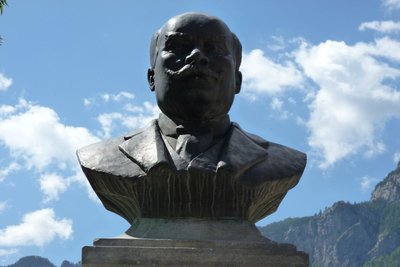
Buste de Gilbert Planche - Office de tourisme Pays des Écrins  History
HistoryGilbert Planche
In 1910, a 22-year-old engineer, Gilbert Planche arrived in L'Argentière-La Bessée to take advantage of the water here and open a large aluminium factory. Many workers were employed and workers' housing estates were built (now demolished). As the result of financial problems, the factories closed its doors in 1985 and the area gradually emptied. Today, derelict sites bear testimony to the town's industrial past.

La chapelle Saint-Jean - Office de tourisme Pays des Écrins  Vernacular heritage
Vernacular heritageThe chapel of Saint-Jean
Built in the twelfth century and listed as a Historical Monument, the chapel of Saint-Jean is of Romanesque style. Tombs cut into the rock were discovered in recent archaeological excavations.

Un cadran solaire - Office de tourisme Pays des Écrins  Vernacular heritage
Vernacular heritageThe sundial
The sundial is an eighteenth-century tradition widespread across the Southern Alps where the sun is ever-present. Artisan sundial makers produced these sundials, which were added as a decoration to house fronts, religious buildings or, as here, a tower. The sayings inscribed on them make some of these artistic works philosophical as well as decorative.
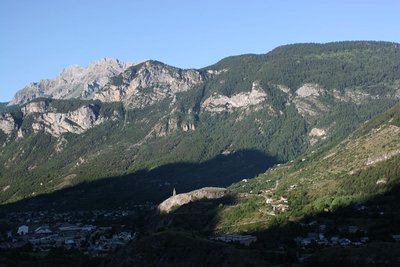
L'horloge des Hermes et L'Argentière-La Bessée - Thierry Maillet - Parc national des Écrins  Panorama
PanoramaThe view over the Durance valley
Protected from Atlantic influences by the Pelvoux massif, the upper Durance valley is subject to a very dry climate, with wide seasonal temperature fluctuations. It features grasslands very similar to the steppes of Central Europe, and which are rare in France. It is part of the Natura 2000 site, “Steppique durancien et queyrassien”.
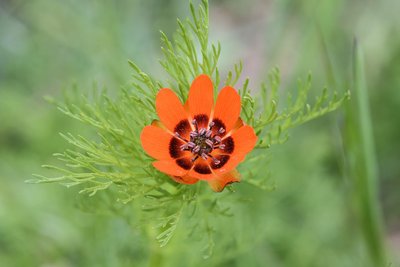
L'adonis d'été - Coulon Mireille - Parc national des Écrins  Flora
FloraThe summer pheasant's-eye
The history of plants is fascinating. A large number of messicole plants (those associated with crops), like the poppy and the cornflower, arrived from the Mediterranean basin or the Middle East as seeds, mixed with cereal seeds, as far back as the very first trading activity in prehistory. Unfortunately, herbicides have led to their virtual disappearance and mountain farming has become their last refuge. And so the summer pheasant's-eye, with its splendid but discreet flowers, still grows here.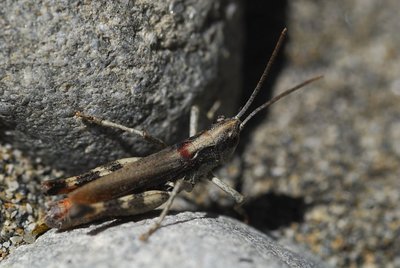
Le criquet des iscles - Coulon Mireille - Parc national des Écrins  Fauna
FaunaThe gravel grasshopper
This species of grasshopper favours islands of gravel, sand banks, and the edges of meandering mountain streams. These habitats are increasingly rare because rivers have been reworked, dammed up or dredged for gravel extraction. So this grasshopper, along with several others, has become critically endangered. The Durance population is one of the few remaining populations in Europe.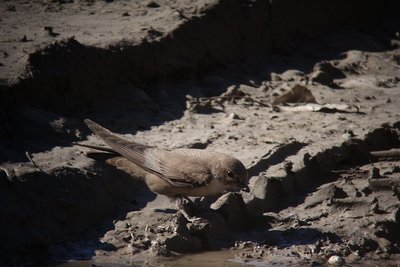
L'hirondelle de rochers - Combrisson Damien - Parc national des Écrins  Fauna
FaunaThe crag martin
They first appear in the Pays des Écrins from late February, so it's true to say that they don't bring the spring! Brown with a beige underside, as their name suggests they nest on crags and cliffs. It is the most common species of swallow in the mountains and is present up to an altitude of 2,500 metres. They are partially migratory, overwintering in the south of France where they join resident colonies.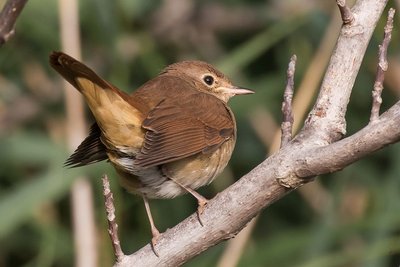
Le rossignol philomèle - Saulay Pascal - Parc national des Écrins  Fauna
FaunaThe nightingale
Superbly camouflaged in a bush, the male nightingale sings his loud and very varied song. What a chatterbox! He even sings at night! This bird is rarely found above an altitude of 1,200 metres, but here he is in Rame. He favours warm places, often by water, and nests in the bushes. A migratory bird, he spends the winter in Africa.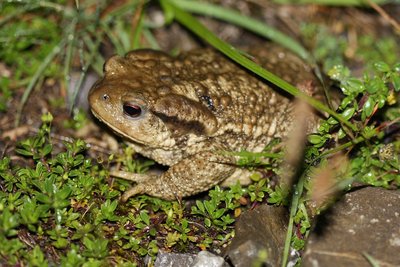
Le crapaud commun - Corail Marc - Parc national des Écrins  Fauna
FaunaThe common toad
This large toad only lives in the ponds during the spawning season, leaving its long strings of toad spawn in the water. So here in the artificial Lac de Rama it has found a habitat to ensure its survival. After the spawning season, it returns to the cool, wooded areas where it hunts small invertebrates at night and spends the day hiding underneath wood or stones or in underground crevices. In hibernates in cavities, protected from freezing temperatures.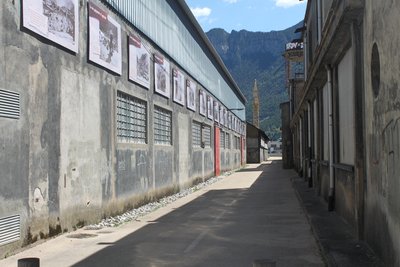
Anciennes industries de L'Argentière-la-Bessée - Office de tourisme du Pays des Écrins  History
HistoryFormer industrial area of L’Argentière-la-Bessée
On the two walls of these now-disused industrial structures, you can read the history of L’Argentière-la-Bessée. The town is marked by its industrial past, in particular by the presence of a hydroelectric power station built between 1907 and 1909 to harness the power of the mountain waterfalls. At the time, it was the most powerful power station in Europe. Other industries were also established here, like the Société du Quartz Fondu fused quartz works and the aluminium factory which provided livelihoods for a large number of workers.
La Durance - Office de tourisme du Pays des Écrins  Water
WaterThe Durance
The Durance is the biggest river in Provence. Its source rises in the municipality of Montgenèvre at an altitude of 2,390 metres, and it flows down to meet the Rhône to the south of Avignon. This is a "pluvio-nival" river, that is to say, its flow depends on the natural addition of water due to snowmelt and rainfall. It thus constitutes a real playground for kayakers from across Europe.
Le Fournel - Office de tourisme du Pays des Écrins  Water
WaterThe Fournel
The source of the Fournel rises in the Fournel valley, in the heart of the Parc National des Écrins, and flows into the Durance near the white water stadium. It is known as a high alpine canyon offering lots of sport and leisure possibilities, and is the most popular in the Haut Val Durance. It is ideal for an introduction to vertical activities, in particular thanks to the presence of several jumps, toboggan runs and rappel sites. Access is authorised from April to October and is regulated because it is located upstream from an EDF water intake, which presents a real hazard.
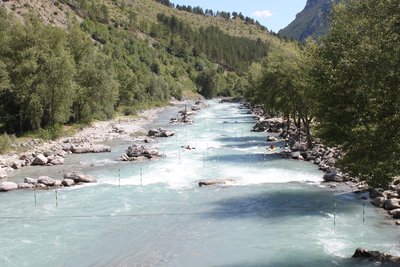
Stade d'eau vive - Office de tourisme du Pays des Écrins  Water
WaterThe white water stadium
As part of its restructuring after the closure of the industrial site, the town of L'Argentière-la-Bessée opted for sports tourism, exploiting the natural elements present on the site, that is to say, water. Standing at the beginning of the longest navigable section of the Durance river, in 1993 the municipality decided to establish itself as a major white water centre by creating this stadium which covers a 400-metre stretch. So thanks to its reputation and its ideal situation, every year this stadium hosts several elite competitions at national and international level.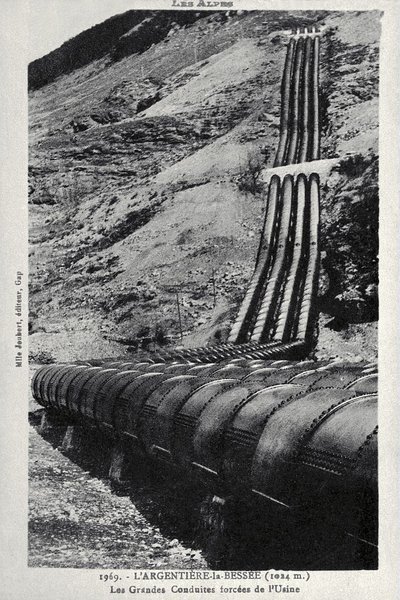
Conduite forcée de L'Argentière-la-Bessée - Parc national des Écrins (collection)  History
HistoryThe penstock pipe
It was in the late nineteenth and early twentieth century that hydropower really came into its own in L'Argentière-la-Bessée. There was plenty of water flowing from the mountains here to generate electricity, at a time when electricity transmission - let alone diversion - technology had not yet been developed. This was achieved by digging out a number of tunnels and laying penstock pipes. Aluminium production became possible and so, too, did a fused quartz activity, making specialised glass for the chemicals industry.

L'Alexanor - Mireille Coulon - Parc national des Écrins  Fauna
FaunaThe southern swallowtail
This very beautiful but rare butterfly is similar to - and can easily be mistaken for - other more common butterflies, the scarce swallowtail (common despite its name) and the common yellow swallowtail. It lives on hot, limestone hillsides. Although protected, it is threatened by the disappearance of its habitat, due in particular to urbanisation and its capture and trade (both illegal) for collectors.
Milan noir - Combrisson Damien - Parc national des Écrins  Fauna
FaunaThe black kite
A bird of prey circles slowly above the valley. It is dark coloured with a slightly forked tail. A black kite, which returned from Africa in spring. It feeds on carrion or scraps as well as fish. It is easy to confuse with the red kite which is brown, red and white and its tail has a much more pronounced fork. The red kite does not nest here in the massif. It is only seen during the migration period, in the Durance valley.
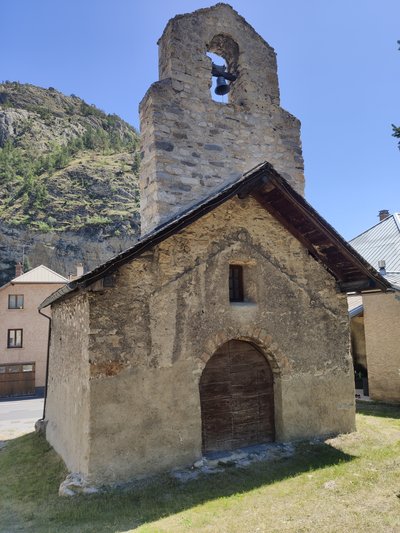
La chapelle Saint-Jacques-de-Prelles - Office de tourisme du Pays des Écrins  Architecture
ArchitectureThe chapel of Saint-Jacques-de-Prelles
The chapel of Saint-Jacques-de-Prelles was built in the Middle Ages, in 1502, on the ancient pilgrims' way from Italy to Santiago de Compostella. It is surmounted by an arcade bell tower, decorated at the top with blind arcades with pointed arches. A number of wall paintings depicting historical episodes adorn the interior of the chapel, likely dating from the fifteenth century. They were restored in 1955. This chapel was listed as a Historical Monument in 1906 and it contains objects also listed as Historical Monuments, such as the bell which dates from 1639 or the eighteenth century silver, gold and brass ciborium.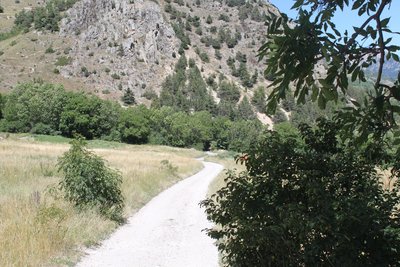
GR 653D - Office de tourisme du Pays des Écrins  History
HistoryThe GR 653D
The GR 653D is the Via Domitia. It is the second stage of the pilgrims' way to Santiago de Compostella, the Way of Saint James. This Grande Randonnée follows the route of the Via Domitia, an ancient Roman road built from 118 BC onwards. It linked Italy to the Iberian Peninsula, crossing Narbonese Gaul. 20 days should be allowed to travel its 459 kilometres of paths.
Access
Source


